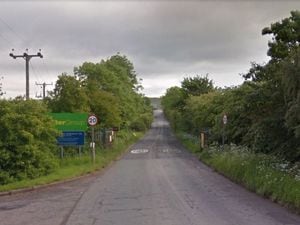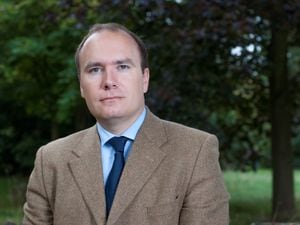Yorkshire Ripper waged five-year reign of terror
For five chilling years Peter Sutcliffe sent a wave of fear among women across the north of England with a series of savage murders which gave him a grim place in the annals of criminal history – as the notorious Yorkshire Ripper.
His reign of terror in Yorkshire and Greater Manchester saw 13 women brutally murdered and others savagely attacked, although nobody knows for sure how many women fell victim.
The first officially recognised Ripper assault was in 1975 and the killings continued until the time of his arrest. But he is suspected of being behind a number of unsolved crimes.
Typically he would attack his victims from behind with a hammer, before stabbing them with a screwdriver or knife. While his self-styled divine mission was to kill prostitutes, not all his victims were.
It was the savage 1977 murder in Leeds of Jayne MacDonald, a 16-year-old shop assistant, which propelled into national headlines the wave of killings. The feared serial killer was now dubbed the Yorkshire Ripper by the press.
His killing campaign was unrelenting, with the police always several steps behind, overwhelmed by a mass of information and unable to connect the dots, and also seriously misled by an infamous hoax tape which convinced them that the culprit was from the Sunderland area.
As a Bradford lorry driver, Sutcliffe travelled widely, and is known to have made a number of deliveries to the then Eaton Yale factory in Halesfield, Telford, and would have stayed in the area overnight, although no crimes in the Midlands have been linked to him.
Peter Coonan, as Sutcliffe was ultimately calling himself using his mother's maiden name, died yesterday at the age of 74.
Reportedly he refused treatment for coronavirus, and he had had a suspected heart attack a few weeks ago.
In the end Sutcliffe had been caught by routine police work, when two Sheffield officers checked on a man and a prostitute in a car in a red light area on January 2, 1981. The car had false plates.
He was questioned at the police station. One of the arresting officers remembered that before being taken to the police station Sutcliffe had asked to answer a call of nature. He returned to search the scene and discovered a ball pein hammer and knife dumped behind a small oil storage tank.
Sutcliffe had also hidden a knife in the cistern of the police station's toilet.
Confronted, he confessed to being the Yorkshire Ripper, and made a long and detailed statement.
Police had got their man.
At the time of his sentencing in 1981 he was given life imprisonment with a minimum term of 30 years, taking his automatic detention to 2011. So heinous were his crimes that in 2010 a whole life tariff was imposed.
Peter William Sutcliffe was born on June 2, 1946, in Bingley, West Yorkshire.
A relative loner at school, he left education aged 15 and took on a series of menial jobs. His work as a grave digger was said to have nurtured an awkward and macabre sense of humour.
On August 10, 1974, Sutcliffe married Sonia. Less than a year later, the lorry driver picked up a hammer and began attacking women, two in Keighley and one in Halifax.
All three survived and police did not notice the similarities between the attacks.
The first fatality was Wilma McCann. The 28-year-old sex worker was struck with a hammer and stabbed in the early hours of October 30, 1975, after Sutcliffe picked her up in Leeds.
He was later to tell police: "After that first time, I developed and played up a hatred for prostitutes in order to justify within myself a reason why I had attacked and killed Wilma McCann."
A double life was to unfold, as a savage killer at night, but a seemingly normal life at home and work.
In 1979, a tape was sent to police by a man calling himself Jack the Ripper. He had already sent a series of handwritten letters from Sunderland and police believed they were on to the killer, discounting all those without a Wearside accent on their substantial database of suspects – Sutcliffe included.
By the summer of that year, Sutcliffe had been interviewed five times. He also bore a significant resemblance to a widely-circulated image of the prime suspect while a banknote discovered near one victim's body was traced to Sutcliffe's employer at the time.
However, the fact his accent and handwriting did not match those of the hoaxer meant Sutcliffe remained a free man until that night in January 1981.
Diagnosed by four psychiatrists as being a paranoid schizophrenic, when he was brought before the Old Bailey the prosecution was minded to accept the serial killer's plea of not guilty to murder, but guilty to manslaughter through diminished responsibility.
That would have seen him go straight into a secure hospital without the need for a trial.
But the judge directed that Sutcliffe would have to stand trial for murder and that his sanity – and therefore criminal culpability – was a matter for a jury. They found him guilty, and having in effect found to be bad, rather than mad, was sent at first to an ordinary prison.
However, after three years in Parkhurst prison on the Isle of Wight he was diagnosed with paranoid schizophrenia and sent to Broadmoor, the secure psychiatric hospital.
And in a further twist, after three decades at Broadmoor, a health tribunal found Sutcliffe no longer needed treatment for any mental disorder and in 2016 he was moved to HMP Frankland in Durham.
A number of attacks during his time locked up left him blind in one eye and having to have 30 stitches in facial cuts.
He was taken to hospital in October this year after suffering a suspected heart attack and returned to the University Hospital of North Durham a fortnight later having contracted coronavirus.
Sutcliffe would perhaps have taken satisfaction in his twisted mind from the fact that he died at the University Hospital of North Durham, three miles from where he was an inmate.
So one of Britain's most notorious serial killers was destined not to die in prison after all.





